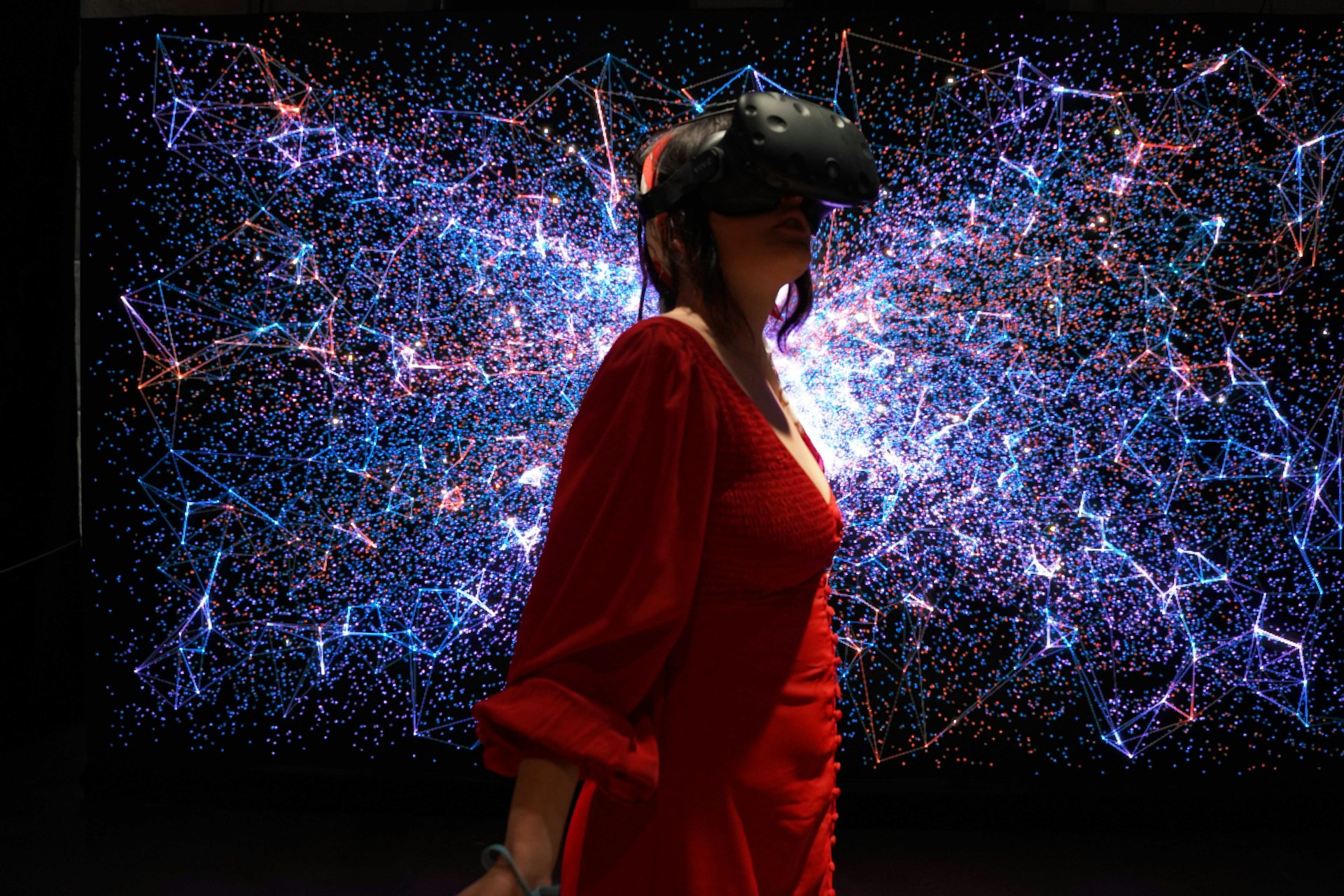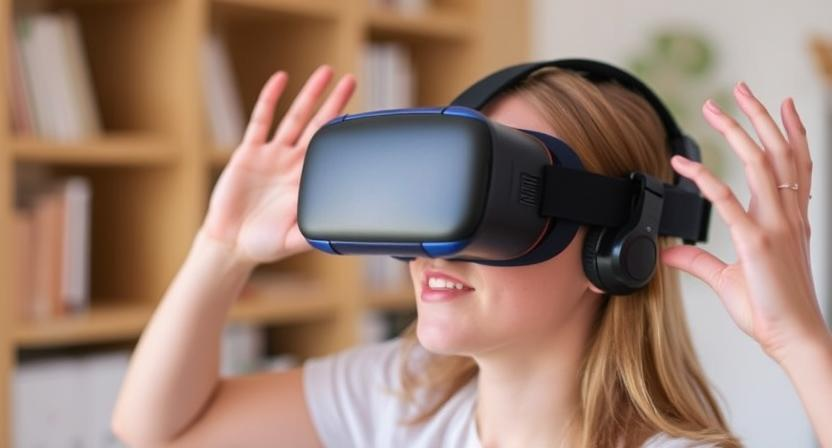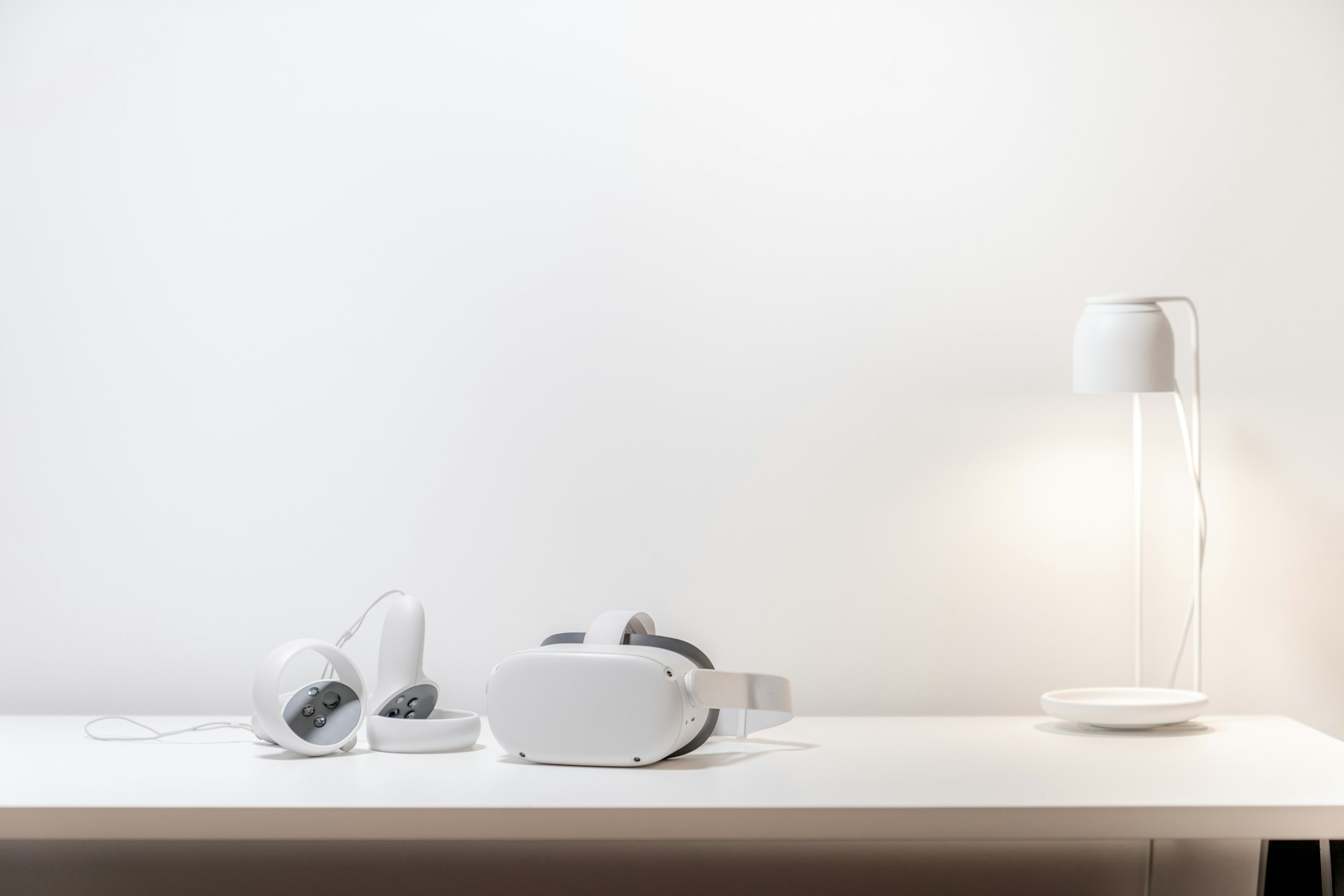The Evolution of VR Technology
Virtual Reality (VR) has come a long way since its inception, evolving from rudimentary systems into immersive, lifelike experiences that blur the lines between reality and virtual environments. Early VR technologies were bulky and costly, limiting their accessibility to a niche audience. However, with advancements in hardware and software capabilities, VR has become more affordable and user-friendly, fueling its widespread adoption across various industries.
The evolution of VR technology can be attributed to the constant innovation and research efforts aimed at pushing the boundaries of what is possible in the virtual realm. From basic 3D graphics to high-definition displays and motion tracking sensors, the progression of VR has been marked by exponential growth in both visual fidelity and interactive capabilities. As a result, VR applications now span diverse fields including entertainment, healthcare, education, and training, showcasing the versatility and transformative potential of this immersive technology.
The Role of Haptic Feedback in Virtual Reality
Haptic feedback holds a pivotal role in enhancing the overall virtual reality experience by introducing a sense of touch to the visual and auditory components. By simulating tactile sensations, haptic feedback bridges the gap between the virtual world and the user, creating a more immersive and interactive environment. This sensory integration provides users with a more realistic and engaging interaction, allowing for a deeper level of engagement with the virtual environment.
Through the use of haptic technology, users can feel a sense of presence and connection to the virtual world that goes beyond mere observation. By translating virtual actions into physical sensations, haptic feedback enriches the user experience by adding a new dimension to interactions in virtual reality. This integration of touch not only enhances the entertainment value of VR applications but also opens up new possibilities for training, simulation, and therapeutic uses by providing users with a more engaging and realistic sensory experience.
Enhancing Immersion Through Tactile Sensations
Immersive experiences in virtual reality (VR) are continuously advancing, with the integration of tactile sensations playing a pivotal role in enhancing user engagement. By incorporating haptic feedback into VR systems, developers aim to bridge the gap between the virtual and physical worlds, allowing users to feel a deeper connection to the digital environment they interact with. The sense of touch adds a new dimension to VR experiences, enabling users to not just see and hear but also physically perceive the virtual environment, heightening the overall immersion and realism.
The tactile sensations generated through haptic feedback in VR simulations can range from subtle vibrations to more pronounced forces that simulate textures, impacts, or interactions within the virtual space. These sensations serve as cues that reinforce the visual and auditory cues provided in VR experiences, fostering a more cohesive and engaging user experience. By immersing users in a multi-sensory environment where touch complements sight and sound, haptic feedback has the potential to blur the distinction between the physical and digital realms, offering a more complete and captivating interaction with virtual worlds.
The Science Behind Haptic Feedback
Haptic feedback is a crucial component in enhancing the immersive experience of virtual reality (VR) environments. This technology relies on the sense of touch to simulate tactile sensations, providing users with a more realistic interaction with the digital world. By simulating textures, pressures, and vibrations, haptic feedback adds another layer of realism to VR applications, making the experience more engaging and convincing for users.
The science behind haptic feedback involves the use of sensors and actuators to deliver physical feedback to users interacting with virtual environments. These sensors detect the user’s movements and actions, while the actuators generate corresponding tactile responses. By synchronizing these inputs and outputs, haptic feedback creates a sense of presence and connectivity between the user and the virtual world, reinforcing the illusion of interacting with real objects and environments.
Innovations in Haptic Technology for VR
In recent years, the field of virtual reality (VR) has seen significant advancements in haptic technology, enhancing the user experience by providing tactile feedback. One notable innovation is the development of haptic gloves that allow users to feel textures and sensations within the virtual environment. These gloves use a combination of sensors and actuators to simulate the sense of touch, adding a new dimension of realism to VR interactions.
Another exciting development is the integration of bone conduction technology into VR headsets. This technology transmits sound waves through the user’s bones, bypassing the eardrums and providing a more immersive audio experience. By incorporating bone conduction into VR headsets, developers can create spatial audio effects that enhance the sense of presence and immersion for users.
Benefits of Incorporating Haptic Feedback in VR
Incorporating haptic feedback into virtual reality (VR) experiences offers numerous benefits to users. One key advantage is the heightened sense of immersion it provides. By simulating tactile sensations through haptic feedback, users feel more connected to the virtual environment, making the experience more engaging and realistic. This increased level of immersion can lead to a more enjoyable and memorable experience for users, whether they are exploring a virtual world, playing a game, or undergoing virtual training.
Moreover, haptic feedback in VR can enhance spatial awareness and improve interactions within the virtual environment. Through tactile cues, users can better understand the layout of a space, feel the weight or texture of virtual objects, and receive physical feedback from their actions. This not only adds a layer of realism to VR experiences but also enables users to interact more intuitively with the digital world, promoting a deeper level of engagement and enhancing the overall user experience.
Challenges in Implementing Haptic Feedback
The integration of haptic feedback into virtual reality systems poses several challenges that developers need to address. Firstly, the complexity and diversity of haptic technologies available in the market require careful consideration to ensure compatibility and optimal performance. With a wide range of haptic feedback devices varying in size, weight, and functionality, achieving seamless integration with VR applications can be demanding.
Moreover, ensuring consistent and accurate haptic feedback across different VR environments and experiences presents a significant hurdle. The need to synchronize tactile sensations with visual and auditory cues in real-time is critical for creating a truly immersive virtual reality experience. Achieving this synchronization in a way that feels natural and enhances user engagement without any perceptible delays or mismatches requires meticulous calibration and technical expertise.
The Future of Haptic Feedback in VR
Haptic feedback technology in virtual reality has come a long way, offering users a more immersive experience by simulating the sense of touch. As we look towards the future of haptic feedback in VR, advancements in this technology are expected to bring even greater realism to virtual environments. Innovations such as more precise sensors, improved actuators, and enhanced integration with other sensory cues will likely be key areas of focus for developers.
Moreover, the future of haptic feedback in VR holds promise for expanding beyond just gaming and entertainment applications. Industries such as healthcare, education, and training are starting to explore the potential of incorporating tactile sensations to enhance learning, skill development, and therapeutic interventions within virtual environments. As haptic feedback technology continues to evolve, the possibilities for creating multi-sensory experiences that are more engaging and impactful for users seem endless.
Creating a Multi-Sensory VR Experience
Virtual reality (VR) technology has made significant strides in creating immersive experiences for users, but to truly transport individuals to a different reality, incorporating multiple senses is essential. By integrating haptic feedback into VR environments, developers can enhance the sensory realism and depth of immersion. This technology allows users to not only see and hear the virtual world but also feel it through vibrations, textures, and pressure, providing a more engaging and interactive experience.
The combination of visual, auditory, and tactile sensations in VR can create a multi-sensory experience that closely mirrors the complexities of the real world. As users engage with virtual environments through touch, their brains can better interpret and respond to the digital stimuli, leading to a heightened sense of presence and connection. With advancements in haptic technology, the potential for creating truly lifelike and compelling experiences in virtual reality continues to expand, opening up new possibilities for applications in gaming, training, therapy, and beyond.
Improving Realism with Haptic Feedback
Haptic feedback plays a pivotal role in enhancing realism in virtual reality experiences. By providing users with tactile sensations and physical interactions, haptic technology bridges the gap between the virtual world and reality. In gaming, this heightened realism immerses players in the gameplay, making actions feel more tangible and authentic. Whether it’s feeling the recoil of a gun or the impact of a collision, haptic feedback adds a new dimension to virtual environments, enriching the overall user experience.
Moreover, in fields like medical training and simulation, the incorporation of haptic feedback elevates the level of realism. Surgeons can practice delicate procedures in a virtual setting where they can feel the resistance and textures as they would in a real operation. This hands-on approach not only refines skills but also instills confidence in professionals, ultimately leading to improved real-world outcomes. As haptic technology continues to advance, the potential for creating even more lifelike simulations across various industries is vast, promising a future where virtual experiences closely mirror the physical world.
User Experience Considerations in VR Development
When it comes to developing virtual reality (VR) experiences, user experience considerations play a crucial role in shaping the overall interaction. Developers need to prioritize aspects like comfort, presence, and intuitive controls to create a seamless and engaging VR environment. By focusing on user-centric design principles, such as minimizing motion sickness triggers and ensuring smooth navigation, developers can enhance the overall experience for VR users.
Moreover, attention to detail in graphical fidelity and audio quality can significantly impact the immersion level experienced by users in a virtual environment. Striking the right balance between performance optimization and visual/audio richness is essential for creating a visually appealing and sensory-rich VR experience. Additionally, incorporating user feedback loops and iterative testing processes can help developers refine the user experience and ensure that the VR content aligns with user expectations and preferences.
Exploring Different Types of Haptic Feedback
Haptic feedback in virtual reality (VR) technology offers users a realistic and interactive experience by simulating tactile sensations. There are various types of haptic feedback that developers can incorporate into VR devices to enhance immersion. One common type is vibrotactile feedback, which uses vibrations to create the sensation of touch. This feedback mimics the feeling of interacting with objects in the virtual environment, adding a layer of depth to the user’s experience. Another type is force feedback, which provides resistance or pressure to the user’s movements, allowing for a more physical interaction within the virtual world. By exploring different types of haptic feedback, developers can cater to various sensory preferences and create a more engaging VR experience for users.
Aside from vibrotactile and force feedback, there are also more advanced types of haptic feedback that offer increased precision and realism in VR environments. Tactile actuators, for example, use electrical signals to produce subtle movements on the user’s skin, offering detailed sensations such as texture and shape. Another emerging type is thermal feedback, which can simulate sensations of heat or cold in virtual interactions. By integrating these diverse types of haptic feedback, VR developers can create more nuanced and immersive experiences that appeal to a wider range of users. The continual innovation in haptic technology opens up exciting possibilities for the future of VR, allowing for more sophisticated and realistic interactions within virtual worlds.
How Haptic Feedback Enhances Gaming in VR
Haptic feedback technology has revolutionized the gaming experience within virtual reality (VR) environments. By adding a tactile dimension to virtual interactions, players can now feel the impact of their actions in a more realistic and immersive way. This sensory input not only enhances the overall gaming experience but also enables players to engage more deeply with the virtual world, heightening their sense of presence and connection to the game environment.
The incorporation of haptic feedback in VR gaming extends beyond mere entertainment value, serving as a tool to provide valuable gameplay cues and feedback. For instance, subtle vibrations or pressure sensations can alert players to in-game events, such as incoming attacks or environmental changes, adding an extra layer of realism and engagement. Additionally, haptic feedback can be used to simulate physical interactions within the game, enabling players to feel textures, impacts, or forces that correspond to their in-game actions.
Medical Applications of Haptic Feedback in Virtual Reality
Virtual reality (VR) technology combined with haptic feedback has found promising applications in the medical field. One significant area where this combination is making a difference is in surgical training and simulation. By providing tactile sensations that mimic real surgical procedures, trainees can immerse themselves in realistic scenarios, enhancing their skills and confidence in a safe and controlled environment. This not only improves surgical outcomes but also reduces the risks associated with traditional training methods.
Moreover, haptic feedback in VR is being utilized for physical rehabilitation purposes. Patients recovering from injuries or surgeries can benefit from interactive VR simulations that offer haptic feedback to guide them through exercises and movements. The precise sensations provided by haptic feedback can aid in improving motor skills, enhancing muscle memory, and promoting faster recovery. This innovative approach not only makes rehabilitation more engaging for patients but also allows healthcare providers to monitor progress more effectively.
Training and Simulation Advantages with Haptic Feedback
Training and simulation in virtual reality (VR) have seen significant advancements with the integration of haptic feedback technology. By incorporating haptic feedback into training scenarios, users can experience a more realistic and immersive environment, enhancing their learning outcome. For example, in medical training simulations, haptic feedback can provide tactile sensations that mimic real-life procedures, allowing medical professionals to practice and refine their skills in a controlled yet lifelike setting. This can lead to improved performance and confidence when transitioning to real-world scenarios, ultimately benefiting patient care.
Furthermore, haptic feedback enhances the fidelity of simulations in various fields, such as aerospace, military training, and engineering. This technology allows users to feel resistance, textures, vibrations, and even temperatures, enabling a more interactive and engaging training experience. For pilots, haptic feedback can replicate the feeling of turbulence or air pressure changes, making flight simulators more true to life. In engineering, users can physically interact with virtual prototypes, feeling the weight and properties of different components, which can aid in design refinement and problem-solving. Ultimately, haptic feedback enriches training and simulation scenarios, offering a more comprehensive and effective learning tool for professionals across diverse industries.
Impacts of Haptic Feedback on Cognitive Engagement
In the realm of virtual reality (VR), the integration of haptic feedback has shown profound effects on cognitive engagement among users. Through the sensory stimulation provided by haptic technology, individuals are able to immerse themselves more deeply in virtual environments, leading to enhanced cognitive processing and heightened levels of focus. This heightened engagement can result in improved learning outcomes, as users are more likely to retain information and exhibit increased performance when interacting with haptic-enhanced VR experiences.
The ability of haptic feedback to engage multiple senses simultaneously in VR environments has been found to increase the overall cognitive load on users. By incorporating tactile sensations that align with visual and auditory cues, haptic feedback can prompt a more holistic cognitive response, promoting greater attention to detail and a heightened sense of presence within the virtual world. Furthermore, by stimulating different sensory modalities, haptic feedback can trigger stronger emotional connections, making the overall VR experience more memorable and impactful in terms of cognitive engagement.
Accessibility and Inclusivity in VR with Haptic Feedback
Incorporating haptic feedback in virtual reality (VR) experiences plays a significant role in enhancing accessibility and inclusivity for a diverse range of users. By adding tactile sensations to visual and auditory cues in VR environments, individuals with visual or auditory impairments can more fully engage with virtual worlds. The tactile feedback provided through haptic technology enables users to navigate and interact with virtual spaces without solely relying on sight or sound, opening up new possibilities for immersive experiences regardless of physical abilities.
Furthermore, haptic feedback in VR contributes to creating a more inclusive environment by catering to users with varying levels of physical mobility. Through the use of haptic devices, individuals with limited dexterity or mobility can engage with VR simulations more easily, breaking down barriers that might have otherwise restricted their participation. This increased accessibility fosters a more inclusive approach to VR technology, allowing people of all abilities to experience and benefit from the captivating world of virtual reality.
Market Trends for Haptic Feedback Technology
Haptic feedback technology has been gaining significant traction in the virtual reality market, with a growing demand for more immersive and engaging user experiences. As the adoption of VR continues to expand across various industries, the need for advanced haptic feedback solutions is on the rise. This trend is fueled by the quest to enhance realism and foster deeper connections between users and virtual environments.
In response to this market demand, technology companies are investing heavily in research and development to push the boundaries of haptic feedback innovation. From wearable haptic devices to tactile feedback systems integrated into VR platforms, the market is witnessing a surge in cutting-edge solutions designed to elevate the sensory experience in virtual reality. As consumer expectations for seamless integration of haptic feedback in VR applications continue to grow, market trends indicate a promising future for advancements in this technology.
Collaborations Driving Innovation in Haptic Feedback for VR
Collaborations between tech companies, academic institutions, and research organizations play a vital role in driving innovation in the realm of haptic feedback for virtual reality (VR). With diverse expertise coming together, these partnerships pave the way for groundbreaking advancements in tactile technology. By combining industry knowledge with academic research, collaborations lead to the creation of more sophisticated haptic feedback systems that enhance the immersive experience in VR environments.
Moreover, these collaborative efforts facilitate the sharing of resources, expertise, and insights, accelerating the pace of development in haptic technology for VR applications. Through joint ventures and strategic partnerships, teams can pool their talents and resources to tackle complex challenges and push the boundaries of what is possible in the realm of tactile sensations in virtual reality. By fostering a culture of collaboration, the industry can continue to evolve and innovate, ultimately benefitting VR users with increasingly realistic and engaging experiences.
The Ethical Considerations of Haptic Feedback in Virtual Reality
Ethical considerations surrounding haptic feedback in virtual reality are becoming increasingly important as the technology continues to advance. One main concern is the potential for haptic feedback to be used in ways that could cause harm or discomfort to users. For example, in immersive gaming experiences, developers must ensure that the sensations generated by haptic feedback are not overly intense or disturbing, especially when simulating actions that could be deemed violent or graphic.
Furthermore, there is a need to address issues related to consent and privacy when incorporating haptic feedback into VR applications. As haptic technology becomes more sophisticated, there is a risk that personal boundaries could be inadvertently crossed, leading to user discomfort or even emotional distress. Developers and users alike must consider how haptic feedback aligns with individual preferences and values, as well as ensure that data collected through haptic interactions is used responsibly and ethically.




